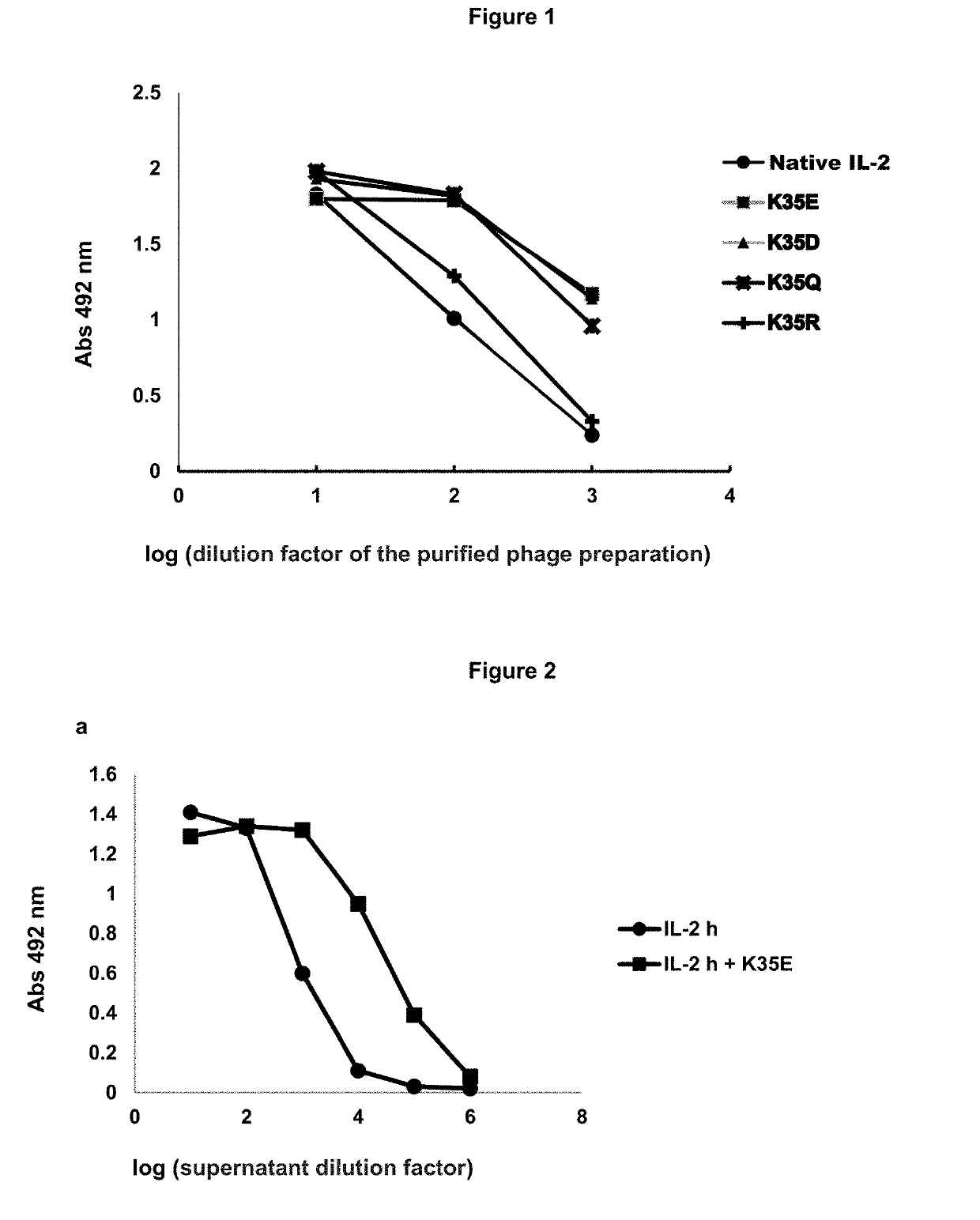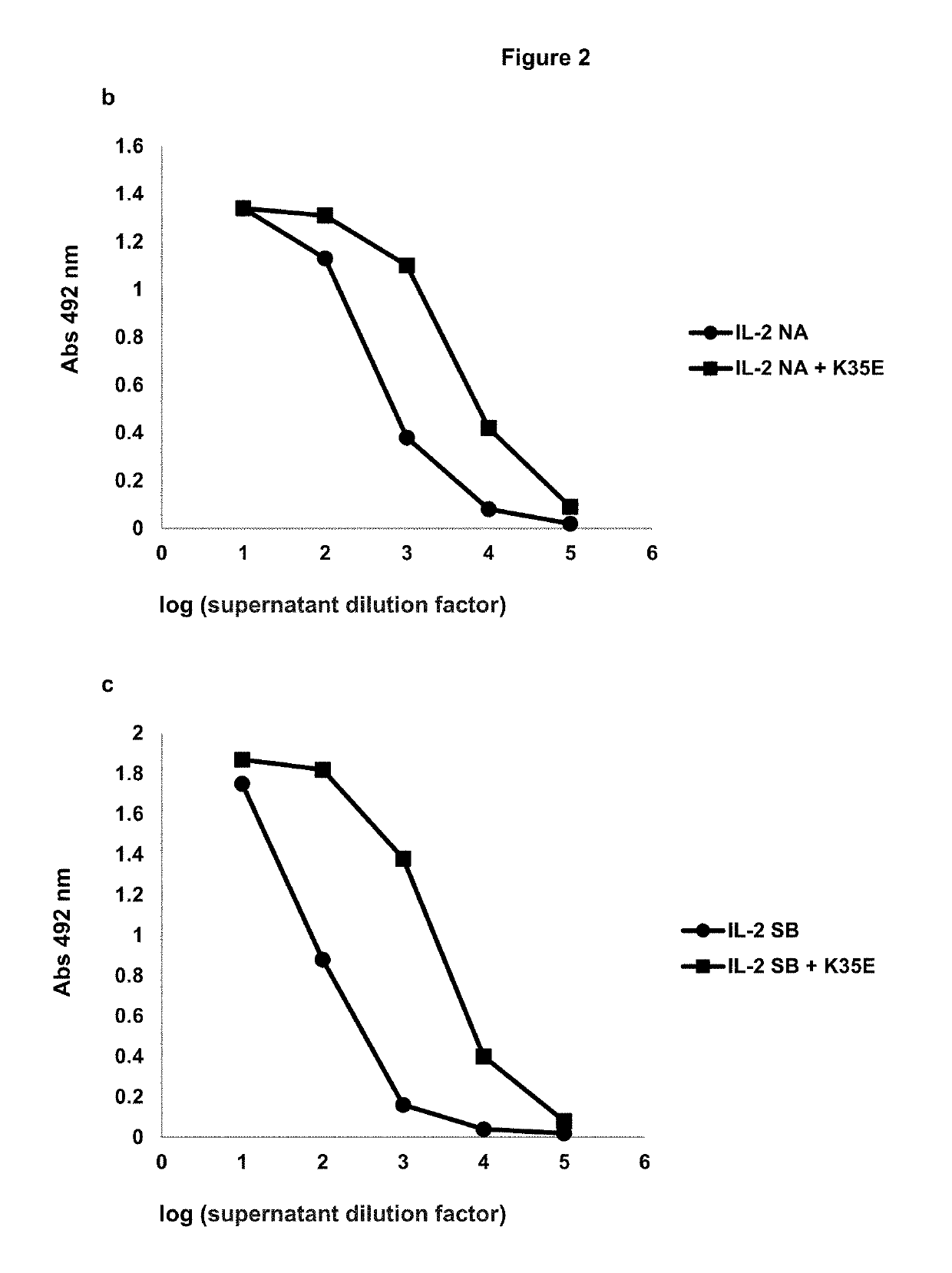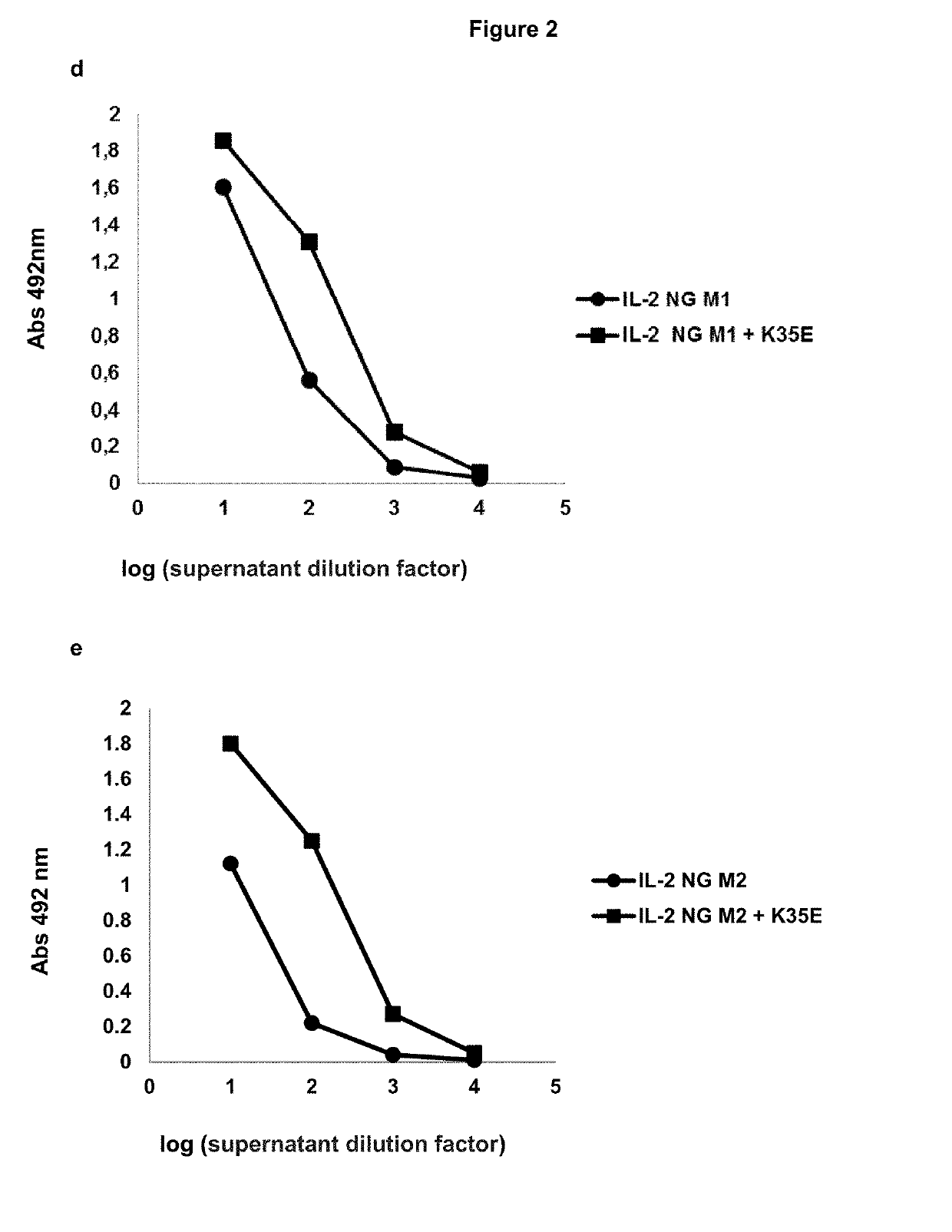Method for Increasing the Secretion Levels of Interleukin 2 and Proteins Derived from it
a technology of interleukin 2 and secretion levels, which is applied in the direction of peptide/protein ingredients, drug compositions, immunological disorders, etc., can solve the problem that the technology platform has not yet been exploited for the selection of new variants of cytokine with modified properties, and achieve the effect of increasing the secretion of molecules and improving the efficiency of production
- Summary
- Abstract
- Description
- Claims
- Application Information
AI Technical Summary
Benefits of technology
Problems solved by technology
Method used
Image
Examples
example 1
and Characterization of Filamentous Phages Displaying Functional Mutated Human IL-2
[0039]A soft randomization library targeting several positions of human IL-2 was constructed. Selected positions included those having residues with side chains contributing to the alpha subunit receptor interface (K35, R38, T41, F42, K43, F44, Y45, E61, E62, K64, P65, E68, V69, N71, L72, Q74 and Y107). Human IL-2 was diversified by Kunkel mutagenesis with spiked mutagenic oligonucleotides keeping 85% of the original nucleotide at each targeted position, plus 15% of the equimolar mixture of the remaining three nucleotides, in order to introduce a moderate degree of diversity in all the selected region. The resulting 109 clone's library thus contained as a whole the 20 amino acids at each position of the interface, while each molecule within the library only had a few replacements, restricting the search for new polypeptides to the functional sequence space closer to the starting molecule. Library phag...
example 2
in the Secretion and Phage Display of Human IL-2 with Non-Conservative Changes at Position 35
[0040]The ability of different IL-2 variants selected from the library to be secreted to E. coli periplasm and displayed on phages was compared. Native IL-2 was used as reference molecule. The K35R-containing variant (conservative change at position 35) was also constructed by Kunkel mutagenesis to be used as an additional control. All the proteins were obtained through the insertion of their coding genes in the phagemid vector pCSM (fused to M13 gene 3) and subsequent phage production from TG1 bacteria transformed with the resulting genetic constructs (Rojas, G. et al, Immunobiology. 218: 105-113, 2013). The levels of phage display of each variant were evaluated through an ELISA on microtitration plates coated with 9E10 monocional antibody. Bound phages were detected with an anti-M13 antibody coupled to horseradish peroxidase. It was shown that replacements K35E, K35D and K35Q result in an ...
example 3
t of K35E Replacement on Secretion and Phage Display Extends to a Panel of IL-2 Mutated Variants
[0041]K35E was introduced by Kunkel mutagenesis in the genes of several mutated variants of human IL-2 (in the phage-displayed format). The panel included four muteins already described to perform different immunomodulatory functions: one no-alpha mutein with selective agonist function on effector T cells (Carmenate, T. et al, J. Immunol. 190: 6230-6238, 2013; U.S. Pat. No. 9,206,243 B2), one antagonist mutein that loses its binding ability to the gamma IL-2 receptor subunit (no-gamma) (U.S. Pat. No. 8,759,486 B2), and two superagonist muteins with enhanced binding ability to either beta (super-beta) or alpha (super-alpha) IL-2 receptor subunits (Levin, A. M. et al, Nature. 484: 529-533, 2012; WO 2005 / 007121). Phages displaying each of these proteins were produced and purified (together with the original molecules without K35E), and the display levels of the foreign proteins were evaluate...
PUM
| Property | Measurement | Unit |
|---|---|---|
| Fraction | aaaaa | aaaaa |
| Biological properties | aaaaa | aaaaa |
| Efficiency | aaaaa | aaaaa |
Abstract
Description
Claims
Application Information
 Login to View More
Login to View More - R&D
- Intellectual Property
- Life Sciences
- Materials
- Tech Scout
- Unparalleled Data Quality
- Higher Quality Content
- 60% Fewer Hallucinations
Browse by: Latest US Patents, China's latest patents, Technical Efficacy Thesaurus, Application Domain, Technology Topic, Popular Technical Reports.
© 2025 PatSnap. All rights reserved.Legal|Privacy policy|Modern Slavery Act Transparency Statement|Sitemap|About US| Contact US: help@patsnap.com



